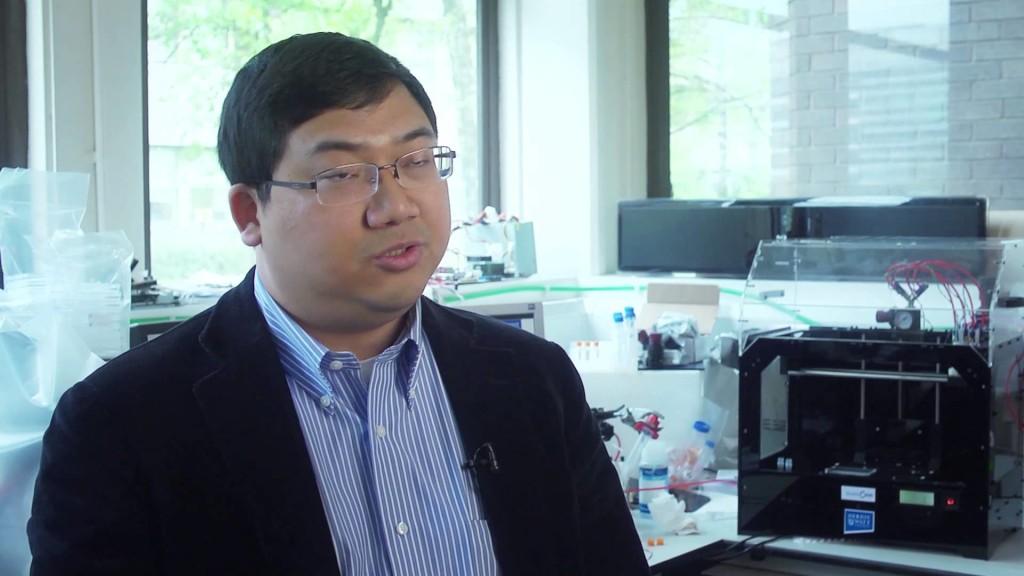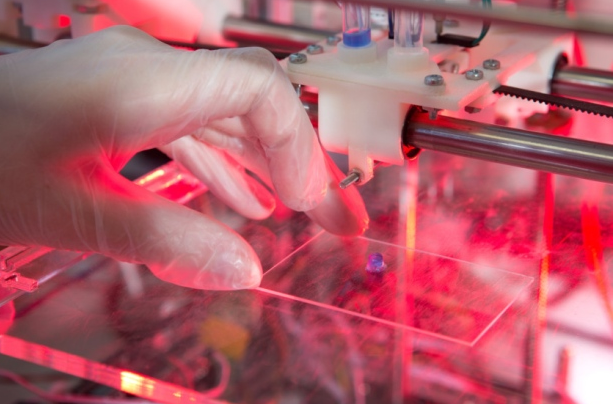 3D printing has gained a strong foothold in numerous areas of the medical industry today, where innovators are making impressive and significant impacts with 3D printed models that help in diagnosing conditions and navigating new and complex surgeries, as well as creating devices like 3D printed prosthetics which have already given many a new lease on life.
3D printing has gained a strong foothold in numerous areas of the medical industry today, where innovators are making impressive and significant impacts with 3D printed models that help in diagnosing conditions and navigating new and complex surgeries, as well as creating devices like 3D printed prosthetics which have already given many a new lease on life.
While we hear a lot of controversy regarding stem cell research and its uses in the traditional sense, that has yet to gear up in a heated manner in the 3D printing world–where controversies certainly do exist from that of the fabrication of weapons and items like pharmaceuticals, to security issues, and intellectual property disputes–but 3D printed stem cells, like the ones being made at Heriot-Watt University in Scotland, are a new conversation altogether.
The team at Heriot-Watt is led by Dr. Will Shu, at the University’s School of Engineering and Physical Sciences (EPS), and they have the distinction of being the first group to 3D print with stem cells, using a valve-based technique. Quite the delicate endeavor, the challenge is to 3D print the sensitive live cultures without damaging or killing them altogether.
The mission is to use this research to begin making patient specific drug treatments which should offer greater efficiency and effectiveness, with the byproduct–a highly beneficial one also–being that animal testing is greatly reduced or possibly eventually eliminated.
The team has evolved their process now, as well as the hardware so that it can handle the fragile nature of 3D printing induced pluripotent stem (iPS) cells. These structures are taken from the donor’s adult cells and require even more special handling than those of the embryonic stem cells the team was 3D printing with in previous projects. The hope for the future is that with even more advanced 3D printing technology they can produce liver, heart, and even brain cells.
“This study is the first to demonstrate that human induced pluripotent stem cells, that is stem cells derived from the adult patient’s own cells, can be bioprinted without adversely affecting their biological functions; that our 3D printing process is gentle enough to do this,” said Dr Will Shu, Associate Professor at EPS. “In this instance we showed that after printing we could turn the stem cells into liver cells.”
“The ability to bioprint stem cells while either maintaining their pluripotency, their ability to develop into all types of cells in the body, or indeed directing their differentiation into specific cell types, will pave the way for producing organoids, or tissues on demand, from patient specific cells. These could then be used for animal-free drug development and personalized medicine.”
Beginning with small batches of 3D printed tissue at first, the team’s goal is to be able to use the bioprinted material for testing drugs and allowing doctors to figure out courses that will offer less side effects and greater benefits to their patients. The researchers are also currently collaborating with the team at Roslin Cellab, a research and development company that assists in making products for the stem cell sector. According to Roslin Cellab’s Dr. Jason King, they see the larger picture for this project as one that offers a future for using cells in creating new models to research diseases.
It’s a vast horizon out there for 3D printing however, and much more complex and promising processes loom as researchers make constant leaps and bounds with bioprinting, creating live cells that can be used for improving the quality of many lives, as well as saving them. The ultimate hope is, of course also, that soon scientists will be 3D printing organs for transplants. Let us know your thoughts on this research in the 3D Printing With Stem Cells forum thread on 3DPB.com.
[Source: The ScotsMan]Subscribe to Our Email Newsletter
Stay up-to-date on all the latest news from the 3D printing industry and receive information and offers from third party vendors.
You May Also Like
Gorilla Sports GE’s First 3D Printed Titanium Cast
How do you help a gorilla with a broken arm? Sounds like the start of a bad joke a zookeeper might tell, but it’s an actual dilemma recently faced by...
Nylon 3D Printed Parts Made More Functional with Coatings & Colors
Parts 3D printed from polyamide (PA, Nylon) 12 using powder bed fusion (PBF) are a mainstay in the additive manufacturing (AM) industry. While post-finishing processes have improved the porosity of...
$25M to Back Sintavia’s Largest Expansion of Metal 3D Printing Capacity Since 2019
Sintavia, the digital manufacturing company specializing in mission-critical parts for strategic sectors, announced a $25 million investment to increase its production capacity, the largest expansion to its operations since 2019....
Velo3D Initiates Public Offering in a Bid to Strengthen Financial Foundations and Drive Future Growth
Velo3D (NYSE: VLD) has been among a number of publicly traded 3D printing firms that have attempted to weather the current macroeconomic climate. After posting a challenging financial report for 2023,...

































